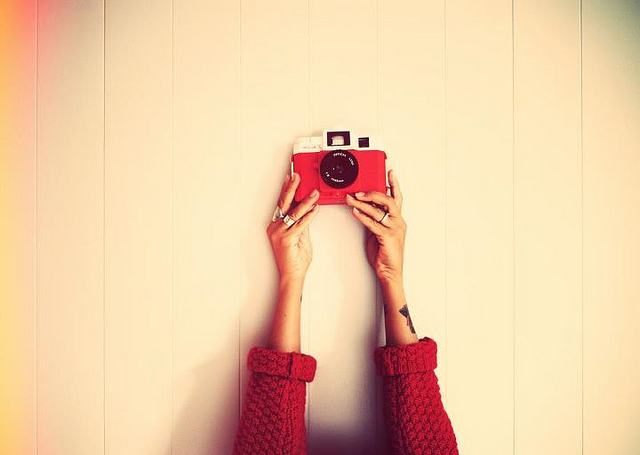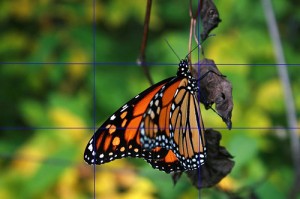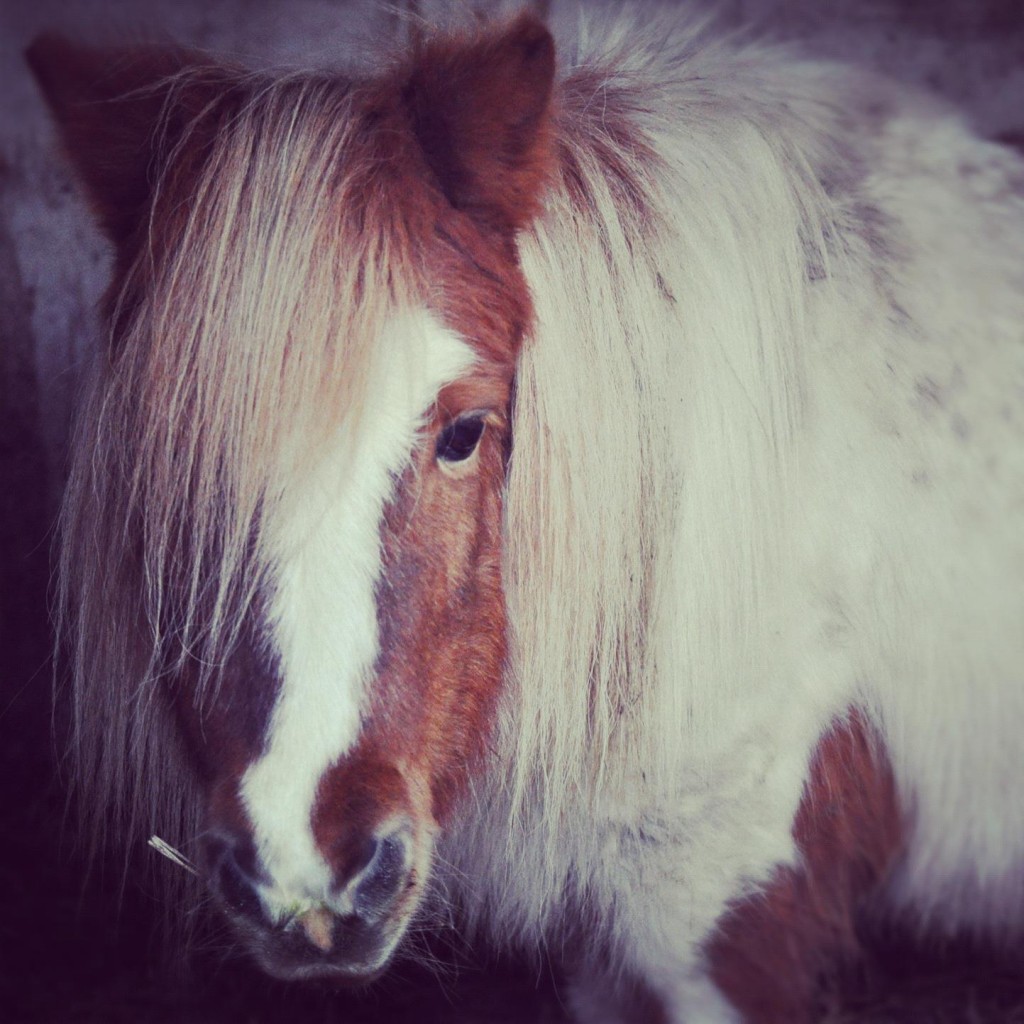
Instagram, flickr, tumblr, facebook, twitter. You can’t help but feel bombarded with different photo uploading websites.
We’re being showered with photos: fancy food delicately arranged on a plate; inanely grinning friends tagged in a variety of locations; sunsets from all over the world.
What makes a photo a good photo? This guide will help turn your everyday snaps into something a bit more special.
Equipment Ready?
Mobile Phones
Mobile Phones are now used more than any other camera to take a photo, so it’s no surprise that this piece of kit in your pocket is actually quite a sophisticated piece of camera gear!
The sad thing is, most people just pull it out of their pocket and click- never bothering to look at settings you can change to make the most of that technology. Good things to look out for on mobile phone cameras are the following settings:
MACRO MODE or a little flower symbol is for taking photos of objects up close, as it will be able to focus on an object and give you a much clearer, less fuzzy picture.
HDR mode is another good one to play about with, this takes two photos and then layers them together- good for landscapes and pictures where you have some dramatic light. When you use this mode, always take the photo twice- once in HDR and then again just normally, and compare between the two- you’ll often find the HDR has brighter colours- but that might not necessarily be the look you’re going for.
FLASH is another good thing to play with on your camera phone, quite often, photos look 100 times better without flash, and you’re normally better off finding natural light by moving outside or opening curtains or doors to let the light in. Natural light will give much more normal looking skin tones and colours- sometimes when you use flash you can end up with the people in your photos looking more like ghosts than breathing humans!
Digital Camera
Now if you’re lucky enough to have your own digital camera, or you’re allowed to borrow one, then you’ll have even more options available to you!
Turn the camera on and have a flick through the different settings, most cameras have the following settings that are worth having a play with:
Sports Mode- this isn’t just for snapping pictures at the local football match, use this mode for any subject that is fast moving or about to move quickly, like your pet dog or someone on a bike. It has something called a ‘quick shutter speed’ and will allow you to get a clear photo rather than a blur. It works best in bright light, so outdoors on a sunny day is best.
Macro Mode- this is similar to the one on your camera phone (if it has it) and is best for taking really close up shots, for example if you’re taking photos of food, text or really tiny animals. It’s important to hold the camera really still, if you can, balance it on a flat surface (you might want to build up a little platform out of books or other small flat objects) and then just press the shutter button. By holding the camera still, you’ll get a crisp, clearer photo, which is always a good thing!
Film Camera
If you like your cameras a bit retro, then film is worth exploring! You can get very cool plastic cameras, like Holga, which take film, and give lovely vintage effects that editing sites like instagram and snapseed try to recreate. These can be bought in shops and on ebay from about £60 and then you pay for the film to be processed. They can be great fun, just don’t forget to wind them on after every photo!
Another film option is the classic disposable camera! You can buy these online or in a high street shop or supermarket. You can have lots of fun with these, as you’ll find it really novel to not see the photo first!
Another reason to try them, is the disposable part…this means you can experiment with submerging them underwater (pick the cheap ones that AREN’T water proof) and you’ll love the results! Murky alien photos of weird and wonderful things! You can also experiment with layering coloured paper over the lens to give your photos different tints of colour. Basically, you’re much more free to experiment, as there is no worry about keeping the camera itself pristine, as it will be thrown away anyway.
Picture This!
Now you know a bit about your equipment, you need to know about how to frame your photos! The way you take a photo and arrange your subject is called ‘composition’. A bit like a composer putting a piece of music together, as the photographer, you compose your picture, like a painter composes his work of art! There are different rules you can follow and ideas you can try to improve the composition of your photos.
Rule of Thirds
Imagine your frame is split into nine boxes, three by three.

As you can see in the photo below, the main subject is off centre, in the second and third column of the frame. This makes a much more interesting photo, you should always try and position your subject, so that it is one side of the frame.

Here are some other examples of photos that are using the rule of thirds
Depth of Field
Now, to start off with, you will just want the main subject of your photo to be in focus. To do this, you need to hold the camera steady and slowly press in the shutter button.
On digital cameras, you might hear a beep sound and if you watch the screen you’ll see the object in the foreground of your picture sharpen and become clearer- then press it down hard all the way.
If you have a touch screen smart phone (like an iPhone) then you should tap the main object in your photo and the camera will focus on the object you’ve tapped, then click the ‘take photo’ button.
Shallow depth of field
Once you’ve mastered that, you might want to try taking a photo of something very close up leaving the background blurry. To do this, you might need to take a couple of photos to get it right, and experiment with moving your object that is close to the camera forwards and backwards until you get the distance right.

As you can see in this photo, the candle stick is in perfect focus, but the background is really blurry. This is called having a shallow depth of field. You can then experiment with what you put in the background, and how out of focus you want it.
In the examples below, I chose things that matched the colour, or were so far away, the blur just turns into blocks of colour and you can’t see what it is.
Now go Snapping!
Now is the time to experiment! Take your camera everywhere and follow these top tips, and enjoy!
– Take the time to compose your photo, pause before you snap, think about what you want to put in the frame.
– Always ask permission if you’re taking photos of people and be polite- it’s important you don’t upset someone by taking photos people don’t want to be taken.
– Experiment! You can try something different, and if it doesn’t work, at least you tried!
– If you like taking photos of people, try and find willing subjects! Younger brothers and sisters can be very useful for these moments!
– It’s fun to practise a mini photo shoot at home with odd objects you’ve collected around the house. Perhaps you have an interesting collection of rocks, jewellery, books or ornaments. Setting up a little photo shoot and practising your different shots at home can be a great way to hone your skills!
– Take care of your valuables! Be aware when you’re out and about that you aren’t putting yourself in danger by having valuables on display.
Grainne Robinson lives and works in Essex and has taken photos for different nail and beauty artists, as well as for a vintage clothes company.
She loves reading books and watching films, as well as exploring new places.
All photos copyright Grainne Robinson, other than:
Butterfly – Rule of Thirds photo courtesy of Flickr
Camera – Featured Image courtesy of Flickr










Really awesome tips!